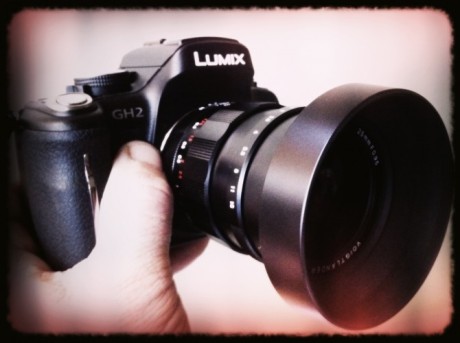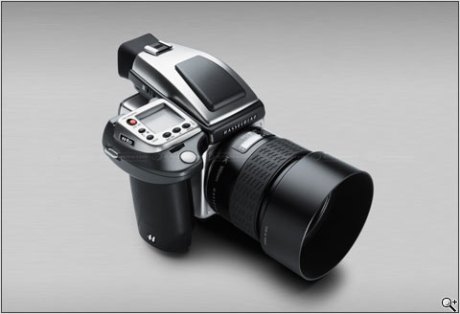As I mentioned previously I have a Lumix GH1 which is about to be superseded by the Lumix GH2. Filmmaker Philip Bloom has a lot of good things to say about his first test with the GH2 here.
Since my earlier post about ways to imbed flickr sets without flash, I’ve hunted around a bit more and found a couple of nice ways to imbed a number of pictures from a set rather than using a slideshow. The one I like most most is the flickriver badge creator. Here’s an example badge from my recent Washington DC trip:
<img title="ebatty – View my 'Washington DC Nov 2010' set on Flickriver" src="http://www.flickriver.com/badge/user/set-72157625469093106/recent/shuffle/medium-4×3/333333/ffffff/35118454@N00.jpg” border=”0″ alt=”ebatty – View my ‘Washington DC Nov 2010’ set on Flickriver” style=”display: block; margin-left: auto; margin-right: auto;” />
In general, flickriver is a very cool way of viewing flickr photos – check out my “most interesting” pictures there. Dopiaza also has a similar badge maker, but I prefer the flickriver one.
Update: hmmm, the badge looks really nice in the blog editor preview but doesn’t seem to work when I publish it on posterous. I’ve now discovered that this is because Posterous is doing auto-expansion of some terms within the embedded code, and this is what is breaking it. I’m now trying to figure out if there’s a way to prevent this auto-expansion, have emailed posterous support.
They offer you both medical information and the possibility of connecting to relatives in their database, should be interesting! Got one for me and one for Paula. The cut price deal lasts until Nov 29 (and you also have to pay an extra $60 for an annual subscription for updates).
I don’t think I’m going to add this one to my list of recommended cameras! Only 499 units will be made, so if you want one you’d better be decisive 🙂 !!
So I've been experimenting with my shiny new posterous blog and liking it so far. One feature that seemed cool was the ability to include a link to a set on flickr, and posterous would convert this to an embedded slide show. I used this feature in this post on cameras. However, I guess this is using the standard flickr slide show which uses Flash, and so it doesn't appear on the iPad (and doesn't have any graceful fallback either). And I want people to be able to read my blog in its full glory on an iPad of course :). I've had a fair hunt around for a non-flash alternative but not found anything. The closest I've found so far is flickrshow, which has basic flickr slideshow functionality in JavaScript but isn't officially released yet, and it isn't really packaged up for easy insertion into a blog. I don't really even need a slideshow, an imbedded photo with a link to the set would be okay. This is what I've fallen back to with my camera post, but that required manual editing of the html that flickr gives you to link to a photo, to make it link to a set instead. Which isn't a huge deal but is a bit of a pain. Maybe I'll have to figure out how to write bookmarklets or something like that to do that link to a set automatically.
I just signed up for an online backup plan with CrashPlan, something I've been meaning to do for a while. They are offering three years for the price of two this weekend, which finally tipped me over the edge. Only $150 for unlimited backup for all my computers, which is a great deal. Other similar offerings include Mozy and Carbonite, but I've read stories about people having issues with their "unlimited" backup not really being unlimited. I need at least a terabyte of backup for all my photos and videos, and I did quite a bit of research a while back on the various options and was most comfortable with CrashPlan. The other thing I really like with CrashPlan is that they will send you a 1TB hard drive (for a fee) that you can use to "seed" your backup – otherwise the initial backup is likely to take months with the amount of data that I have. I'll report back on how it goes!
I’m quite into photography, especially travel and wildlife photography, and recently have been dabbling with HDR quite a bit (which I’ll talk about in another post). You can check out what flickr thinks are my more interesting photos here:
People often ask me what camera I would recommend and of course it depends on what you want to use it for. I have three main cameras at the moment (or four if you count my iPhone 4). The oldest is a Nikon D80 which is a mid-range digital SLR, with a Nikon 18-200mm zoom lens which means I don’t have to switch lenses. That’s it on the picture below (mounted on a Manfrotto monopod, which is handy for quick HDRs, steadying the camera in low light, and making people think you’re a serious photographer 🙂 ).
The D80 has now been superseded by the Nikon D90, or the new and slightly more upmarket Nikon D7000. This is the most responsive of my cameras – like other DSLRs, it will focus and shoot very quickly, so it’s great for action or wildlife shots. It feels very solid and has a very reassuring shutter click sound!
However, it’s not the camera I use most often now – that’s my Lumix GH1, which is about to be superseded by the Lumix GH2 (you get out of date quickly with cameras these days!). The big thing with the GH1 is its video capability – it was the first SLR-like camera to do both great photos and excellent HD video with a pretty full feature set (in particular it was the first to have auto-focus while doing video). It’s quite a bit smaller and lighter than my D80 and I’ve got more into video these days, so it’s nice to be able to do either photos or video with the same camera. I don’t really want to carry two large cameras on most occasions, which makes this my camera of choice most of the time now when I’m doing reasonably heavy duty photography or video. One other thing I like about the GH1 versus the D80 is the fold out screen with live view, which means you can use it in a more flexible way. It’s often nice to take candid photos just holding the camera casually on a table say, or hanging round your neck, without it being too obvious that you’re taking pictures. And it’s handy when you’re using a tripod, which I usually do for HDR pictures. It has a similar zoom range to my Nikon too – not quite such a long zoom but close.
Here’s one of the first videos I filmed with the GH1 (I’ll have more posts about video editing and processing in due course):
Denver Christmas Lights 2009 from Peter Batty on Vimeo.
Both the GH1 and the D80 are not pocket cameras, and often it’s more convenient to have a lightweight camera that will fit in your pocket. I have owned several small (as well as large) Lumix (Panasonic) cameras and recommend them highly. Until very recently my small camera was the Lumix ZS7, which was very compact (not in the very slimmest range, but very easily pocketable). Amazingly for its size, it has a 12x optical zoom, and its other cool feature for a geo-geek like me was that it had a built in GPS. Though there are other ways of getting GPS coordinates into photos (another future topic). Unfortunately the ZS7 stopped working a couple of weeks ago – its lens jammed :(. This was right before we were due to go for a dinner at the British Ambassador’s residence in Washington DC, so I definitely wanted a small camera to be able to get some pictures while (hopefully) not looking too much like a lost tourist :). I decided to replace it with a Lumix LX5, which I guess you could call a “serious compact” camera. It has a lot of features to allow manual control and will record raw images (more on those in a future post too). It also has a wide aperture f2.0 lens, which means that it can work well in low light without a flash (better than my bigger cameras with the current lenses I own). It has a pretty wide angle too (24mm equivalent), though less of a zoom (3.8x). But I have to say I really love this camera so far, it takes great pictures. And I think it looks very cool too – a bit retro and quite distinctive.
The following album is the first set of pictures I took with this at the British Ambassador’s dinner, in low light:
And these are more pictures I took around Washington DC with it:
So the Lumix LX5 is definitely highly recommended (it does great HD video too). I’ll do a more detailed review of that at some point too.
So that’s the basic intro to my camera collection!
I’ve been blogging for quite a while on geospatial technology at geothought, but thought it was about time I started a personal blog. I plan to talk about photography, videography, travel, gadgets and whatever else seems interesting! You can find my personal web site at ebatty.com, which is in fairly dire need of an overhaul, and you can also find me on flickr, vimeo, youtube, LinkedIn, Facebook, and twitter.






